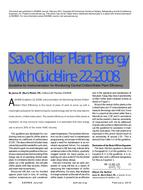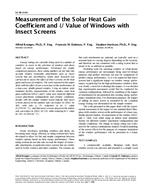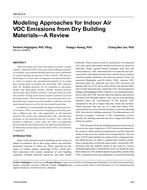The results of two thermal comfort surveys performed in Zambia, which has a tropical upland climate, are presented and analyzed with special reference to the adaptive model. The main forms of adaptation and adjustment analyzed are: clothing, skin moisture, activity level, and environmental controls. Results show that in the cool season the main methods of adaptation used by the subjects were clothing and environmental controls, while in the warm season only environmental controls were used. It proved difficult to establish the impact of the various levels of adaptivity on thermal comfort standards. It would be useful if the adaptive model could be factored into thermal comfort to produce adaptive thermal comfort standards that would allow for differences in culture and climate across the globe.
Units: Dual
Citation: Symposium, ASHRAE Transactions, 1998, Vol 104, pt. 1A, San Francisco
Product Details
- Published:
- 1998
- Number of Pages:
- 10
- File Size:
- 1 file , 490 KB
- Product Code(s):
- D-7879


